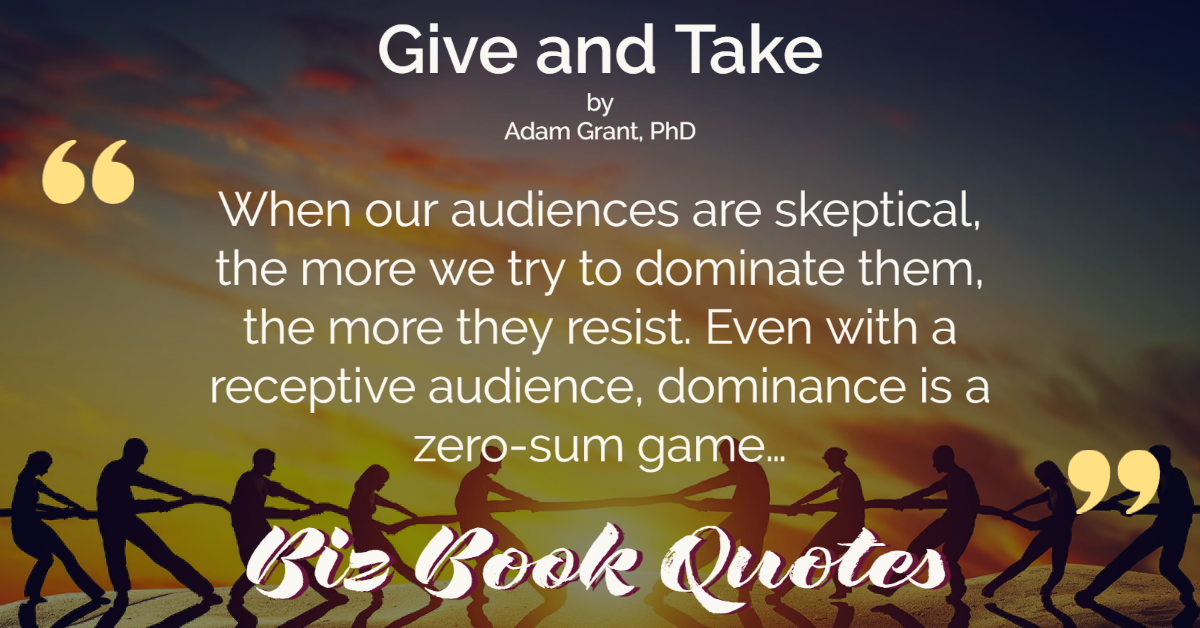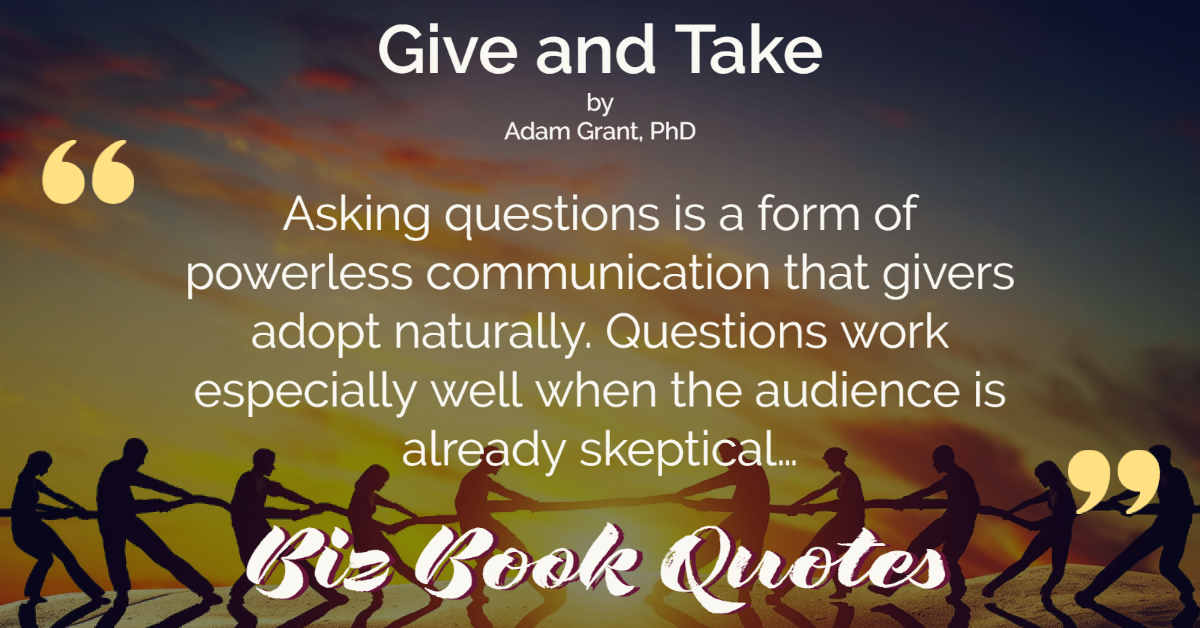|

|
Give and Take:
When people focus on others, as givers do naturally, they’re less likely to worry about egos and miniscule details; they look at the big picture…
|
114 |
|

|
Give and Take:
In escalation situations, takers often struggle to face the reality that an initial chose has gone bad.
|
116 |
|

|
Give and Take:
…because of their dedication to others, givers are willing to work harder and longer than takers and matchers. Even when the practice is no longer enjoyable…
|
119 |
|

|
Give and Take:
Whereas takers often strive to be the smartest people in the room, givers are more receptive to expertise from others, even if it challenges their own beliefs.
|
121 |
|

|
Give and Take:
Research suggest that there are two fundamental paths to influence: dominance and prestige.
|
130 |
|

|
Give and Take:
When our audiences are skeptical, the more we try to dominate them, the more they resist. Even with a receptive audience, dominance is a zero-sum game…
|
130 |
|

|
Give and Take:
Powerless communicators tend to speak less assertively, expressing plenty of doubt and relying heavily on advice from others.
|
130 |
|

|
Give and Take:
Takers tend to worry that revealing weaknesses will compromise their dominance and authority. Givers are more comfortable expressing vulnerability…
|
133 |
|

|
Give and Take:
Asking questions is a form of powerless communication that givers adopt naturally. Questions work especially well when the audience is already skeptical…
|
139 |
|

|
Give and Take:
By asking questions and getting to know their customers, givers build trust and gain knowledge about their customers’ needs. Over time, this makes them better and better at selling.
|
140 |











